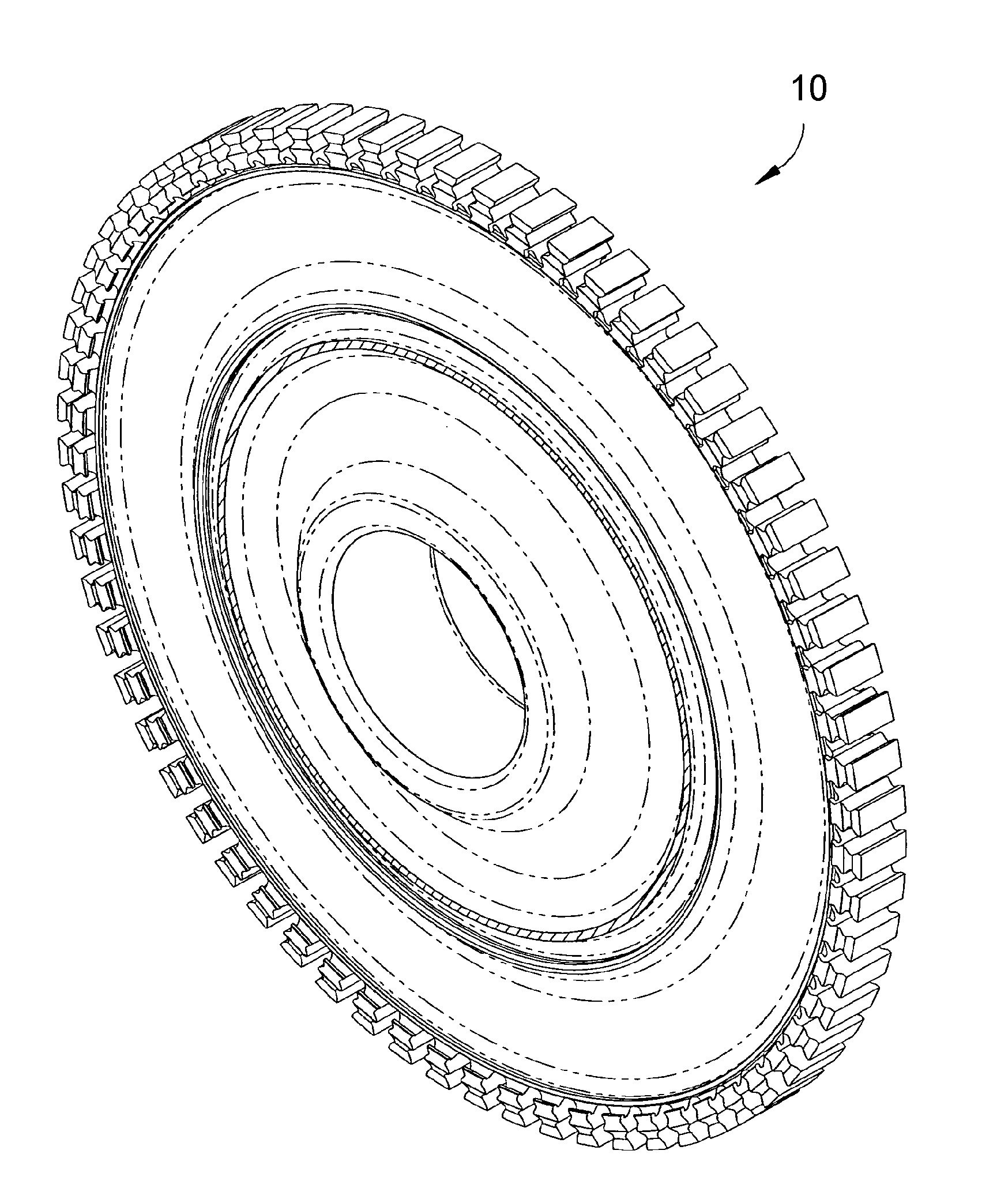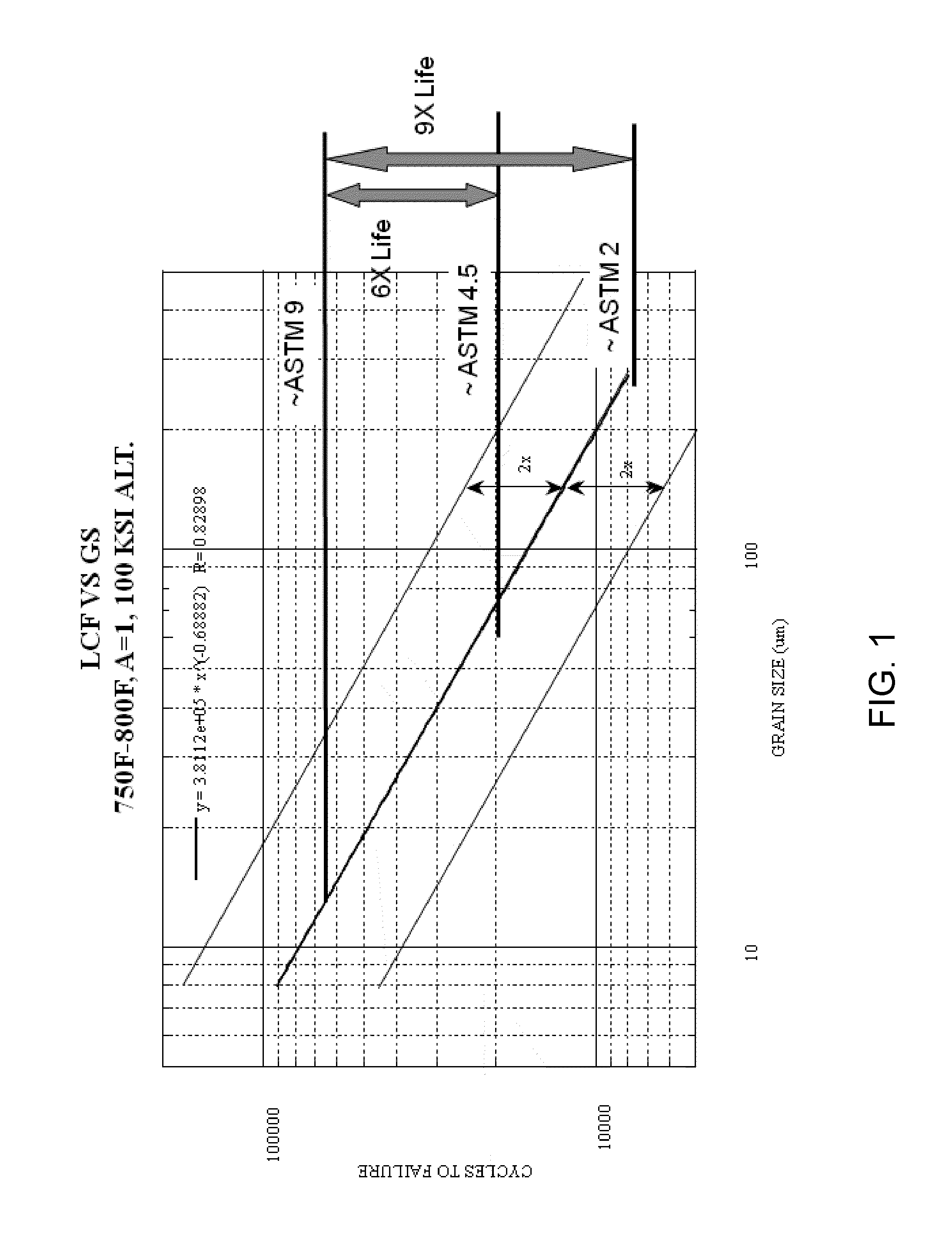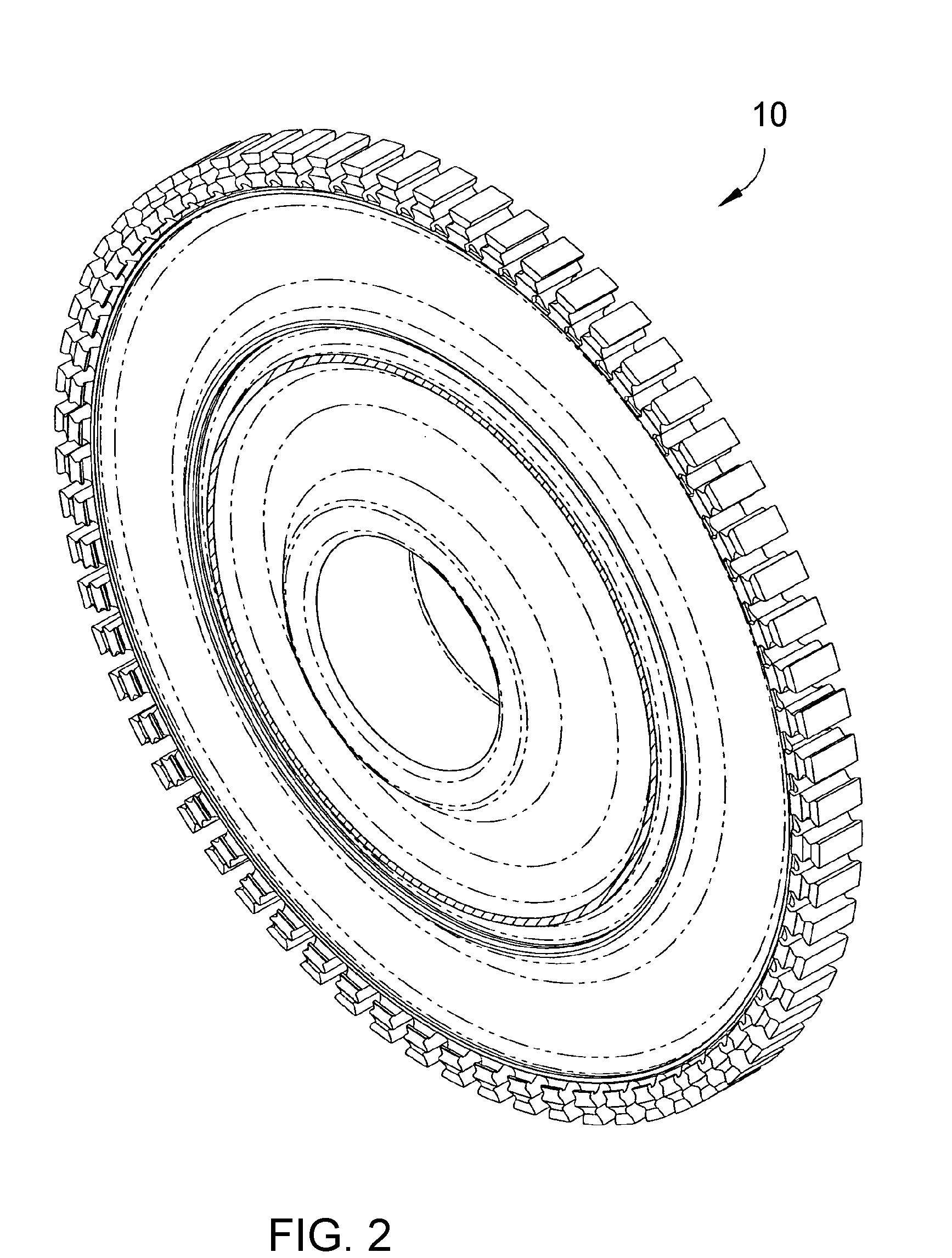Method of controlling and refining final grain size in supersolvus heat treated nickel-base superalloys
a nickel-base superalloy and final grain technology, applied in the field of nickel-base superalloys, can solve the problems of critical grain growth, affecting other mechanical properties, affecting the tensile strength, so as to improve uniform grain size. , the effect of improving the low cycle fatigue behavior
- Summary
- Abstract
- Description
- Claims
- Application Information
AI Technical Summary
Benefits of technology
Problems solved by technology
Method used
Image
Examples
Embodiment Construction
[0022]The present invention is directed to gamma prime nickel-base superalloys, and particular those suitable for components produced by a hot working (e.g., forging) operation to have a polycrystalline microstructure. A particular example represented in FIG. 2 is a high pressure turbine disk 10 for a gas turbine engine. The invention will be discussed in reference to processing of a high-pressure turbine disk for a gas turbine engine, though those skilled in the art will appreciate that the teachings and benefits of this invention are also applicable to compressor disks and blisks of gas turbine engines, as well as numerous other components that are subjected to stresses at high temperatures and require low cycle fatigue and high temperature dwell capabilities.
[0023]Disks of the type shown in FIG. 2 are typically produced by isothermally forging a fine-grained billet formed by powder metallurgy (PM), a cast and wrought processing, or a spraycast or nucleated casting type technique....
PUM
| Property | Measurement | Unit |
|---|---|---|
| Fraction | aaaaa | aaaaa |
| Fraction | aaaaa | aaaaa |
| Fraction | aaaaa | aaaaa |
Abstract
Description
Claims
Application Information
 Login to View More
Login to View More - R&D
- Intellectual Property
- Life Sciences
- Materials
- Tech Scout
- Unparalleled Data Quality
- Higher Quality Content
- 60% Fewer Hallucinations
Browse by: Latest US Patents, China's latest patents, Technical Efficacy Thesaurus, Application Domain, Technology Topic, Popular Technical Reports.
© 2025 PatSnap. All rights reserved.Legal|Privacy policy|Modern Slavery Act Transparency Statement|Sitemap|About US| Contact US: help@patsnap.com



